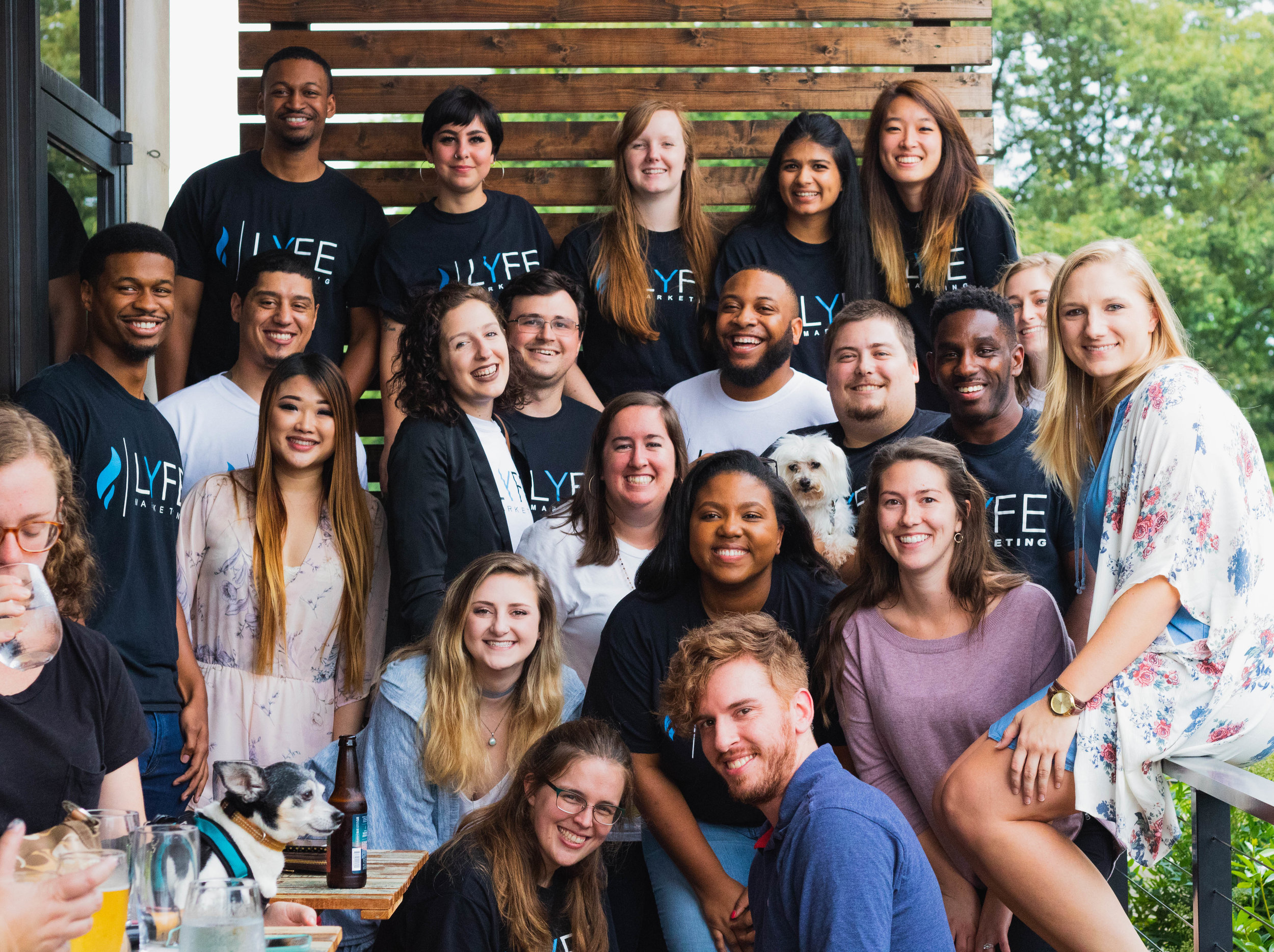Now that the dust has settled on ProductCamp, kicking off our spotlight series with a talk with Sean Stanberry, founder and CEO of Lyfe Marketing. Launching a business is the ultimate product management challenge and at 23, Sean is living the dream. Here is our conversation on his journey.
Q. What led up to where you are today?
A. I am 23 now. My father was an entrepreneur – he owned a tax accounting business, and ran it in primarily the home. When I was younger, I saw him run a business, bring in more clients and saw the impact he made with his business on other people’s lives. I was very inspired by that. I understood early in my life that entrepreneurship was a viable option for me.
I worked at Stone Mountain Park as a photographer and took photos of tourists and different people in the city and all over Georgia. I used that job to boot strap the company I founded – Lyfe Marketing in December 2011.
Q. What gave you an idea to move from taking photos to digital marketing?
A. When I started with Kodak in Stone Mountain Park, I was a young kid, still in High School. I needed a job then primarily for additional income, but in the process I was always thinking of starting my own new business. My generation is heavily integrated with social media. So social networks like Facebook, Instagram, and Twitter came second nature to us. I started a Twitter account in 2011 called Voice of Atlanta and tweeted about news, sports, TV – anything on popular culture. And we ended up attracting 30,000 followers to that account. I started it to have conversations with people in Atlanta and over time grew a huge audience.
Q. How did you get there? What was your road to finding such a huge audience?
It wasn’t even a tangible goal I was targeting. When I saw things happening, I wanted to make it bigger and it grew with momentum.
What happened was that as the followers grew, I started getting local businesses, musicians, restaurants and more asking if I could promote their services or shows to this audience. So it became profitable. During that time, a lot of people questioned the ROI of social media and I understood it.
It was then that I started doing research and was exposed to that whole area of social media marketing. I said we know this, this is big and we had seen ROI already. We had promoted a previous event and hundreds showed up from strictly social media promotion. So I got together with my best friend and brother – we started to provide marketing services for a lot of small businesses.
When we first started we worked with a lot of local labels, independent artists, new companies who did not have a huge promotional outlet. Initially we were just managing Twitter accounts for them. And from that we grew to getting local Atlanta businesses and bigger and better clients, and we were able to increase our prices based on the results we were generating.
Q. What have you learnt about discovering/serving customers? You have to really understand your customers and their customers very well to be promoting them on social media.
A lot can be accomplished from a social media standpoint since it is so cost effective.
One way is to poll our audience. You can ask a question and see if people will respond, or do a poll on Facebook.
You can also post a lot of different content to test what they like. For example, if we are working with a small business owner who owns a bar – we can post photos of different sports teams and see if his audience likes content on sports, or if his audience likes content on food or on different events that happens near his bar. Once you figure out what they like, its all downhill from there – you just keep on giving them what they want.
You can also monitor them on Twitter and see what they are tweeting and posting. Twitter search engine allows you to track many different conversations based on keywords, which is great data when discovering your customers.
Q. How do you look for keywords in Twitter?
You have to understand your target audience a little bit at least. There are search phrases a particular target audience will use a lot. For example, one of our clients is Westmar Student Lofts and their target audience is students in Atlanta. So you can search #Gatech, #GSU, #GaState etc in Twitter.
Another example, say you are a burger restaurant. You can search “want burger” near the zip code of your location (using advanced search) and see tweets about people who want a burger.
Q. Tell me some common social media mistakes.
A. Biggest mistake people make is thinking that everyone is going to like what they do. These people make social media all about them. For example, a restaurant keeps posting menus and food items – some people may look at it and say its delicious but the majority of them will not care if you keep posting about your fried chicken. Many people continually post about themselves and not interact with their customers or potential prospects.
If you are going to be successful in social media you need to open the door and give them a chance to interact.
Q. Tell me something you learn the hard way in your journey.
A. Personally, it kills me to say this but I have to reevaluate myself as a leader in the decisions I make with the company. I made mistakes like telling people to do the wrong thing or not making decisions of facts / true logic but just my gut or emotions. As a leader I am continuously growing every day.
Q. What are some of your favorite tools and apps?
I love TweetDeck as I manage so many social media profiles. Love app called ManageFlitter – biggest feature I love is that you can wipe our followers who are inactive, and look at your database more critically. Another app that I really like is XPLRR – app that allows to see everything that’s going in Atlanta in terms of events/news.
Q. Any ideas/tips for product managers in using social media to promote their products?
1) Tell a story around your product. Every product has a story behind it. Such as why it was created, who they founders were, how long did it take, what were the challenges, what were the victories, etc. Everyone likes a good story and once they care, they’ll consume.
2) Use video to standout. In 2014, simply posts, tweets, statuses are being ignored. Photos are still good, but most of your big competitors will be publishing them too. Video is different. Today, video takes more time, resources and strategy to implement. However, it’s a great way to promote your product. Use video reviews, customer interaction, live demonstration, features, process, video comparisons, storytelling, etc. Video at a high level is a great way to stand out.
3) Have a plan of strategy and execution. Sounds simple right? However, I see so many people jump into so excited and after they don’t see a huge impact after a month or two they drop off. You truly have to dedicate time and effort into social media for it to work. Our company spends at least 2 hours a day to manage our own social media growth. Knowing your strategy and having an execution plan will help your team maintain consistency.
Thats it for this time. We are always looking to profile people from the ATL community interested in sharing their story. Let me know at tiyash at pcampatl.com if you would like to share your story.








